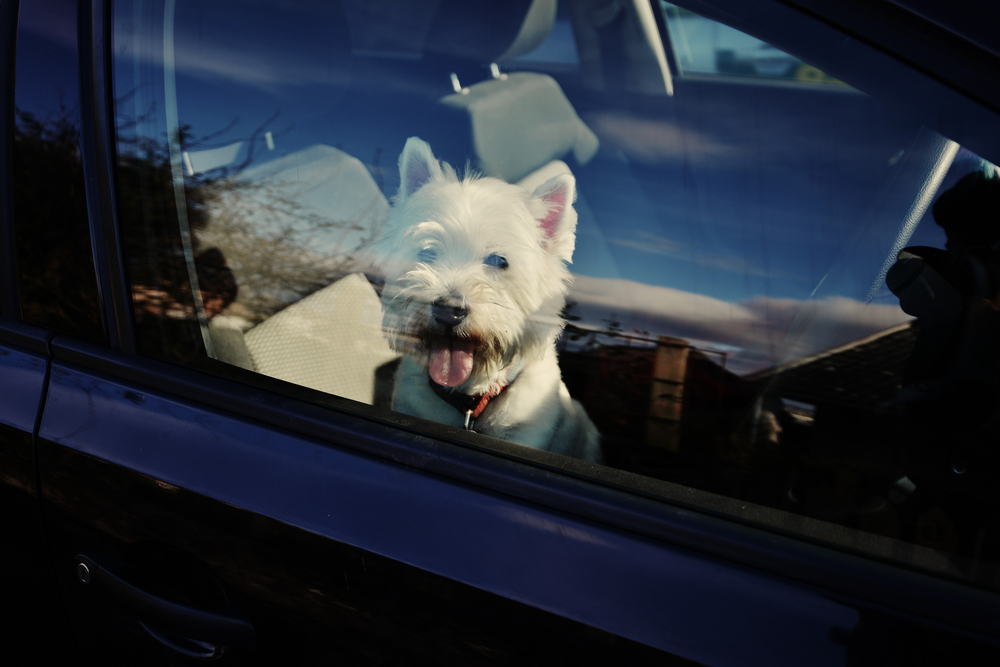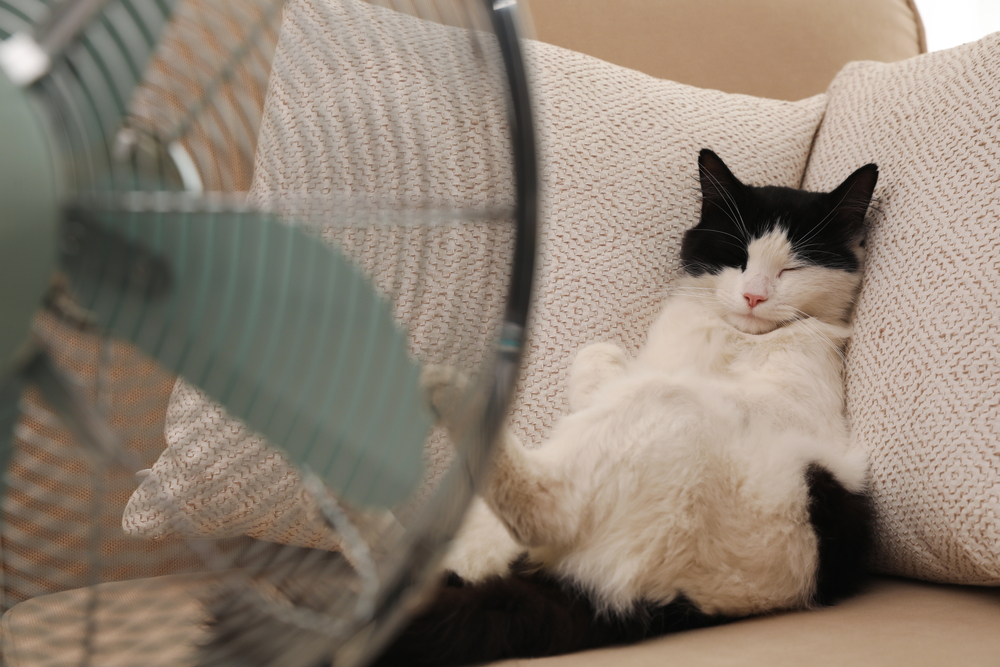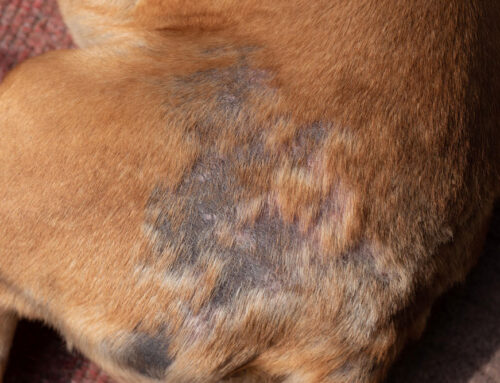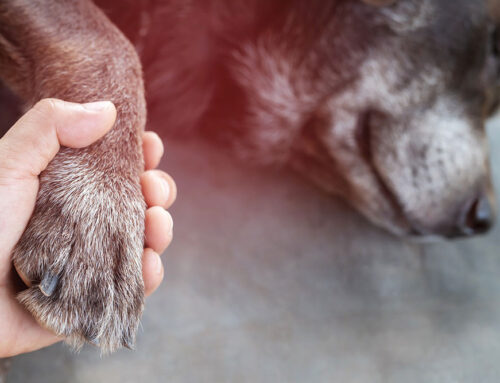Many pet owners like to enjoy the summertime outside with their pets, but the warm temperatures can be dangerous. Heatstroke, a potentially life-threatening condition, is a significant concern during hot and humid weather. Our Creature Comforts Veterinary Service team wants you and your pet to have an enjoyable summer, so we provide information about heatstroke and tips to protect your four-legged friend.
Heatstroke in pets
Increased body temperature caused by environmental conditions is referred to as heatstroke. A pet’s normal body temperature is 101.5 plus or minus one degree, and a body temperature above 104 degrees constitutes a true emergency. Heatstroke has multiple detrimental effects on a pet’s body, including:
- Heart — Sustained elevated body temperatures inhibit the heart’s ability to effectively pump blood throughout the body, leading to decreased circulating blood volume and shock. In addition, direct heart injury may lead to arrhythmias and further exacerbate perfusion abnormalities.
- Lungs — Excessive heat directly damages lung vasculature, causing fluid accumulation in the lungs and respiratory distress.
- Gastrointestinal (GI) — Decreased perfusion compromises GI integrity, which leads to increased permeability. Bacteria can then enter the bloodstream, which leads to septicemia.
- Kidneys — Inadequate perfusion and direct thermal injury can lead to acute kidney failure.
- Coagulation — Heatstroke can trigger disseminated intravascular coagulation (DIC), a condition that causes abnormal blood clotting throughout the body.
- Brain — Thermal injury can lead to brain swelling and bleeding.
Initial signs include lethargy, excessive panting, and thick, ropey drool. As the condition progresses, signs include difficulty breathing, disorientation, diarrhea, and collapse.
Pets at increased heatstroke risk
Pets have sweat glands in their feet and ears, but sweating plays a minor role in body temperature regulation. Pets must rely on less efficient methods, such as panting, to cool themselves, which means that all pets are susceptible to heatstroke. However, some pets are at increased risk, including:
- Brachycephalic breeds — Breeds such as bulldogs, pugs, boxers, Pekingese, and Persian cats, have short, flat faces that don’t allow proper air circulation when they pant, and they have a reduced ability to effectively regulate their body temperature.
- Overweight pets — Overweight pets have an additional fat layer that inhibits their ability to cool themselves.
- Senior pets — Senior pets have a decreased ability to regulate their body temperature.
- Ill pets — Pets with a medical condition, such as a heart condition or respiratory illness, are at increased heatstroke risk.
Pet heatstroke first aid
If your pet overheats, appropriate first aid can save their life. Tips include:
- Move your pet — Take your pet to a cool, well-ventilated, preferably air conditioned, area.
- Offer your pet water — Offer your pet water, but don’t attempt to force them to drink or pour the water in their mouth.
- Take your pet’s temperature — If possible, take your pet’s temperature to monitor their progress and relay the finding to our veterinary team.
- Cool your pet — Use lukewarm water to cool your pet. Pour the water over their back, neck, and abdomen. You can also wet their ear flaps and paws.
- Avoid ice — Avoid using cold water and ice to cool your pet, because they can lower your pet’s temperature too quickly and result in shock.
- Seek veterinary care — Continue to cool your pet while you transport them to a veterinary hospital immediately.
Preventing pet heatstroke

Tips to protect your pet from heatstroke include:
- Schedule a wellness check — Schedule an evaluation by our veterinary team to ensure your pet doesn’t have an underlying condition that predisposes them to heatstroke.
- Never leave your pet in a car — The temperature in a vehicle can increase by an average of 40 degrees in one hour, regardless of the outside temperature, and puts your pet’s life at risk. Leaving the car with a window cracked or parking in the shade doesn’t mitigate the problem.
- Leave your pet at home — If the weather is especially hot or humid or your pet is a high risk, leave them at home and let them enjoy the air conditioning.
- Hydrate your pet — Dehydration increases your pet’s overheating risk. Ensure they have multiple water sources, and clean and refresh their bowls daily. On outings, take bottled water and a portable water bowl and offer them frequent drinks.
- Take frequent breaks — Also on outings, take frequent breaks in shady areas to let your pet cool down.
- Exercise safely — Exercise your pet early in the morning or late in the evening, when temperatures tend to be cooler.
- Leave your air conditioner on — You may be tempted to turn your air conditioning off when you leave for the day, but temperatures inside your home can get dangerously high on hot, summer days. In addition, close your curtains to help keep temperatures down.
- Don’t shave your dog — Your dog’s coat protects them from overheating and sunburn. You can trim long-haired dogs, but never shave them.
- Let your pet enjoy the water — Provide a kiddy pool or lawn sprinklers to help your pet cool down on a hot day. Ensure you supervise them while they play to prevent accidents.
If you want to schedule a wellness examination for your pet before the summer heats up, contact our Creature Comforts Veterinary Service team. We can ensure they are ready for warm weather fun.







Leave A Comment